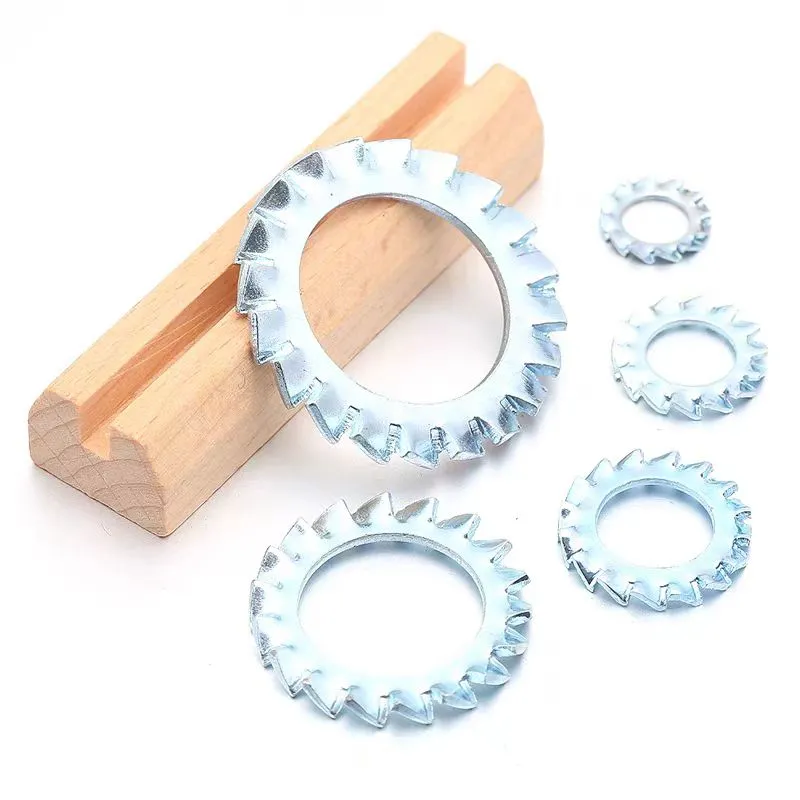

Hex Head Tapping Screws for Versatile Fastening Solutions in Various Applications
Nov . 05, 2024 22:34 Back to list
Hex Head Tapping Screws for Versatile Fastening Solutions in Various Applications
Understanding Hex Head Tapping Screws
In the world of fasteners, hex head tapping screws stand out as a popular and efficient choice for securing materials together. These screws possess unique features that make them ideal for various applications, especially in metalworking and construction. This article delves into the characteristics, advantages, and applications of hex head tapping screws, showcasing their crucial role in modern engineering.
What are Hex Head Tapping Screws?
Hex head tapping screws are a type of self-tapping screw that come with a hexagonal head. This design allows for easy installation using a standard wrench or socket, offering better torque than traditional screw heads. The “tapping” aspect refers to the screw's ability to create its own thread as it penetrates the material, eliminating the need for pre-drilled holes in softer materials. Typically made from hardened steel and coated for corrosion resistance, hex head tapping screws are designed to provide high strength and durability.
Features and Benefits
The distinctive hexagonal head of tapping screws offers several advantages. First, the head design allows for a secure grip, reducing the chance of slipping during installation. This feature makes them ideal for high-torque applications where precision is necessary. Additionally, the self-tapping capability minimizes installation time and labor costs since there’s no need for additional tools to create pilot holes.
Another benefit of hex head tapping screws is their versatility. They are suitable for use in a range of materials, including wood, plastic, and metal. This adaptability means they can be used in numerous industries, from automotive to construction and electronics. Furthermore, the choice of various coatings, such as zinc plating or black oxide, enhances their resistance to corrosion, making them suitable for outdoor and industrial applications.
hex head tapping screw

Applications of Hex Head Tapping Screws
Hex head tapping screws find use in an array of applications due to their robust design and efficiency. One common application is in metal fabrication, where they are often employed to assemble metal parts and frames. In the automotive industry, these screws are used in vehicle assembly lines to secure components, ensuring that the final products are strong and reliable.
In addition to automotive applications, hex head tapping screws are widely used in the construction industry. They are frequently utilized for roofing and exterior applications, where their resistance to environmental factors is crucial. Many construction projects rely on these screws to fasten metal sheeting, secure structural frameworks, and install fixtures.
Moreover, the electronics industry benefits significantly from hex head tapping screws. They are frequently used to assemble electronic enclosures and mount circuit boards securely. The ability to create a tight seal against vibrations makes them indispensable in devices that experience motion or mechanical stress.
Conclusion
Hex head tapping screws represent a remarkable innovation in fastening technology. Their hexagonal shape provides superior grip, while their self-tapping nature simplifies the installation process. Offering versatility across various materials and industries, these screws are integral to numerous applications. Their durability, strength, and ease of use make them a favored choice for manufacturers and builders alike.
As technology advances and the demand for reliable fastening solutions increases, hex head tapping screws will continue to play a vital role in engineering and construction. Whether for securing automotive components, constructing durable frameworks, or assembling electronic devices, these screws exemplify efficiency, strength, and adaptability in a fast-paced world. Understanding their features and benefits allows professionals and hobbyists alike to make informed decisions about using these indispensable fasteners in their projects.
Latest news
-
High-Strength Hot Dip Galvanized Bolts - Hebei Longze | Corrosion Resistance, Customization
NewsJul.30,2025
-
Hot Dip Galvanized Bolts-Hebei Longze|Corrosion Resistance&High Strength
NewsJul.30,2025
-
High-Strength Hot-Dip Galvanized Bolts-Hebei Longze|Corrosion Resistance&High Strength
NewsJul.30,2025
-
Hot Dip Galvanized Bolts-Hebei Longze|Corrosion Resistance&High Strength
NewsJul.30,2025
-
Hot Dip Galvanized Bolts - Hebei Longze | Corrosion Resistance, High Strength
NewsJul.30,2025
-
High-Strength Hot Dip Galvanized Bolts-Hebei Longze|Corrosion Resistance, Grade 8.8
NewsJul.30,2025

